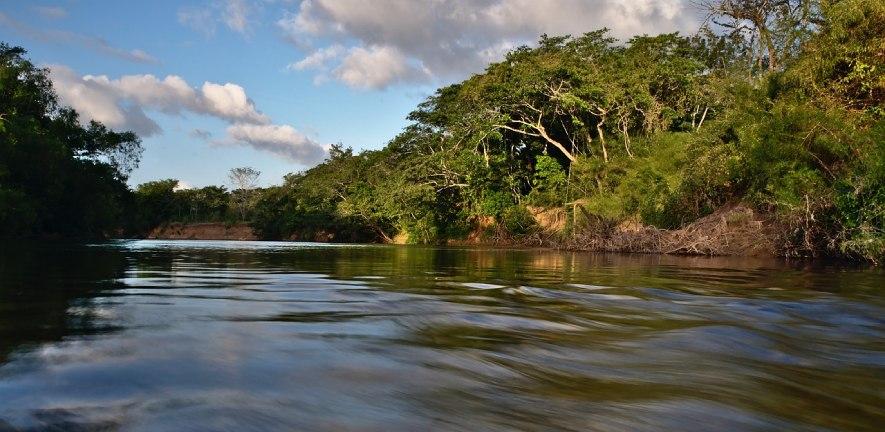
28 July 2023 - Dr Nina Seega and Dr Mohsen Gul from CISL’s Centre for Sustainable Finance highlight ways private capital can be mobilised to fulfil the global climate finance promise.
The global climate crisis is a challenge that requires urgent attention and significant resources. As the world grapples with the need to finance climate change mitigation and adaptation efforts, there's a growing realisation of private finance’s role in this arena. Engaging the private sector in these efforts is not just a beneficial strategy but a necessary one. We need to create a conducive environment to enable private capital to be mobilised through:
- Low-cost finance mobilisation
- Blended finance and risk-sharing instruments
- Tackling debt and liquidity challenges
- Collaboration across system players
- Market creation and infrastructure development
- Originating and sharing business models.
Over the past two decades, the global aid and development finance structure has seen remarkable changes. While initiatives such as the G7 Carbis Bay commitments to double bilateral official development assistance (ODA) for climate to $60 billion by 2025, and the scaling up of multilateral development bank (MDB) financing to exceed their 2025 climate finance goals, represent significant strides, they may still fall short of the substantial funding required to address these global challenges effectively. For instance, the Bridgetown Agenda calls for MDBs to lend an additional USD 1 trillion for climate and development resilience as compared to the current USD 100 billion commitment.
The private sector's ability to provide substantial funding is evident from the trend of financial flows to developing countries, which have seen a steady increase, primarily driven by private sector finance. Private finance has been growing at a rate of 10% per year, compared to the 2% growth of public finance. Moreover, the high leverage ratios achieved by MDBs due to their specific capitalisation structure further underscore the potential of private finance in filling funding gaps. According to OECD (2023), MDBs mobilised private finance of an average USD 33.8 billion per year between 2018 and 2020:
As the MDBs and bilateral donors strive to meet and exceed their climate finance goals, engaging the private sector in these efforts is not just a beneficial strategy, but a necessary one. The reform of the MDBs' capital adequacy framework, which includes redefining the approach to risk appetite, uplifting from callable capital, and strengthening lending headroom, opens new avenues for private sector involvement. Initiatives such as scaling portfolio risk transfers to the private sector of MDB non-sovereign loans and transforming the Global Emerging Markets Risk Database Consortium (GEMs) into a standalone entity for private investors, demonstrate the potential for private capital to contribute significantly to these goals.
In high-income countries, 81 percent of green investment is funded by the private sector. In contrast, in emerging and developing countries, the private share is a mere 14 percent. This discrepancy highlights the need to secure private finance for potentially profitable projects, which represent about 60 percent of the required investments, while relying on official assistance for less lucrative deals.
The cost of capital presents a fundamental barrier, with developing countries borrowing at higher rates than countries with international reserve currencies. For instance, the average interest cost for a similar solar farm is 10.6 percent per annum in leading emerging countries ((Brazil, India, Indonesia, Mexico and South Africa), compared to only 4 percent in the European Union region. This disparity hampers the feasibility of private investments in these regions. It affects the commercial viability of mitigation projects in the developing world and discourages private sector involvement.
To address this issue, efforts could focus on creating an investment climate that offers attractive returns for private investors. This can be achieved by addressing the cost of capital barrier through risk-sharing and de-risking instruments. Governments and MDBs can collaborate to provide guarantees and absorb some of the risks associated with climate projects. This approach can reduce the interest costs for private lending and make investments in emerging and developing countries more appealing. The following recommendations could help leverage private capital in the global climate finance architecture:
- Low-cost finance mobilisation: Expanding the envelope of low-cost and debt-free finance is crucial. Initiatives such as augmenting special drawing rights (SDRs) (achieving G20 target of $100bn in SDRs to low-income countries/ less than a quarter of the $290bn given to members of the G7 group of advanced economies in the IMF’s $650bn allocation of its SDRs), leveraging voluntary and compliance carbon markets, creating an International Financing Facility for climate, and mobilising private philanthropy can significantly enhance the availability of finance.
- Blended finance and risk-sharing instruments: Employing blended finance structures (e.g. BioCarbon Fund) and risk-sharing instruments (e.g. IADB-IIC's financing of renewable energy projects in Argentina) can incentivise private sector participation in climate projects. Collaboration between MDBs and private financial institutions can enhance risk assessment and sharing, leading to increased private investment.
- Tackling debt and liquidity challenges: Resolving debt and liquidity issues facing many countries is vital to support their climate and development efforts. By addressing these challenges, financial resources can be unlocked, creating a favourable environment for climate finance. For example, Belize’s debt for nature swap reduced the country’s external debt by 10% of GDP. The deal was financed by private investors including Credit Suisse with backing of US development bank (DFC).
- Collaboration across system players: Harnessing the potential of the entire public development bank system, including bilateral development finance institutions (DFIs) and local development banks, is crucial. Collaboration among multilateral development banks, governments, and private sector stakeholders is crucial in mobilising private finance. Sharing knowledge, best practices, and expertise can create an enabling environment for private investment. A whitepaper by Aviva Investors (2022) presents a climate emergency roadmap for the global finance architecture; ascertaining need to develop a global net-zero transition plan for finance, with private sector at the core of the ambition loop.
- Market creation and infrastructure development: Catalysing markets through the development of asset classes and market infrastructure can generate market confidence and attract private finance. Strengthening local banking sectors and capital markets, as well as blending and refinancing, create favourable conditions for private investment.
- Originating and sharing business models: Transitioning from traditional balance-sheet-based approaches to originate-and-share or originate-and-transfer models can facilitate private capital mobilisation. This approach allows for greater diversification of risks and enhances the financial sustainability of climate projects.
The private sector's ability to provide substantial funding, as evident from the increasing financial flows to developing countries, highlights its potential. Reforms in multilateral development banks and efforts to address the cost of capital can attract private investors. There have been technical conversations taking place on post 2025 climate finance goal and funding arrangements at Bonn and Paris.
As we approach COP28 with limited time remaining, it is imperative for the stakeholders of the global financial architecture to join forces, rethink strategies, and reconfigure funding arrangements, ensuring the mobilisation of private capital to fulfil the climate promise.






